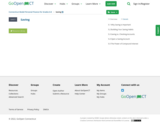
5.1 Why Saving is Important5.2 Building Your Saving Habits5.3 Saving vs. Checking Accounts5.4 Open a Saving Account5.5 The Power of Compound Interest
- Subject:
- Finance
- Provider:
- CT State Department of Education

5.1 Why Saving is Important5.2 Building Your Saving Habits5.3 Saving vs. Checking Accounts5.4 Open a Saving Account5.5 The Power of Compound Interest

Next Gen Personal Finance High School Courses VideoNext Gen Personal Finance High School Demo VideoCSDE Model Curricula Quick Start GuideEquitable and Inclusive Curriculum The CSDE believes in providing a set of conditions where learners are repositioned at the center of curricula planning and design. Curricula, from a culturally responsive perspective, require intentional planning for diversity, equity, and inclusion in the development of units and implementation of lessons. It is critical to develop a learning environment that is relevant to and reflective of students’ social, cultural, and linguistic experiences to effectively connect their culturally and community-based knowledge to the class. Begin by connecting what is known about students’ cognitive and interdisciplinary diversity to the learning of the unit. Opposed to starting instructional planning with gaps in students’ knowledge, plan from an asset-based perspective by starting from students’ strengths. In doing so, curricula’s implementation will be grounded in instruction that engages, motivates, and supports the intellectual capacity of all students.Course Description: The NGPF Semester Course is designed to be an engaging, teacher-led curriculum for grades 9 - 12. This course is perfect for teachers who have an entire semester to teach personal finance concepts. It features lesson plans to meet diverse learning styles; rigorous, engaging activities throughout the term; and a digital format so that content is always up-to-date and accessible. The course content aligns to the National Standards for Personal Financial Education. Upon completion of the course, students will have the ability to:Understand the benefits of participating in employer sponsored retirement savings plans and healthcare savings plans.Identify different types of jobs and careers where wages and salaries depend on a worker’s productivity and skills.Differentiate between gross, net, and taxable income.Calculate the amount of taxes a person is likely to pay.Develop a budget to allocate current income to necessary and desired spending, including estimates for both fixed and variable expenses.Describe how inflation affects purchase decisions and the price of goods and services.Analyze social media marketing and advertising techniques designed to encourage spending.Investigate common types of consumer fraud and unfair or deceptive business practices, including online scams, phone solicitations, and redlining.Compare and contrast the features of mobile payment accounts, cryptocurrency accounts, and checking/savings accounts.Explain how traditional IRAs (individual retirement accounts), Roth IRAs, and education savings accounts provide incentives for people to save.Describe how credit card grace periods, methods of interest calculation, and fees affect borrowing costs.Explain the role the FAFSA plays in applying for college financial aid.Identify scholarships and grants for which they are eligible.Analyze the conditions under which it is appropriate for young adults to have life, health, and disability insurance.Recommend types of insurance needed by people with different characteristics.Aligned Core Resources:Core resources is a local control decision. Ensuring alignment of resources to the standards is critical for success. The CSDE has identified Next Generation Personal Finance as a highly aligned core resource after a rigorous review process.Additional Course Information: The NGPF Semester Course includes a diagnostic, midterm, and final exam. It also contains 9 unit tests, 1-2 options for alternative summative assignments for each of the 9 units, and a final project. This course is online-based and is best implemented in a classroom where students have 1:1 access to technology. All materials are customizable to help you meet the needs of every student in your classroom. The lessons and activities may be completed in person, remotely, and/or in a hybrid learning environment. For teachers who have a full year to teach personal finance content, see the NGPF Full Year Course
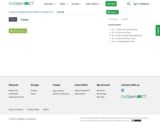
Lesson Names:Checking Accounts Savings Accounts Beware of Banking Fees Being Unbanked Strategies to Save Challenges to Saving Online and Mobile Banking Navigating Your Online Bank Account

Lesson Names:Your Values and Money Your Brain and Money Overcoming Cognitive Biases

Lesson Names:Budgeting 101 Budgeting Strategies Budgeting for your HomeBudgeting for Transportation Budgeting for Food Budgeting in the Gig Economy Build Your Budget
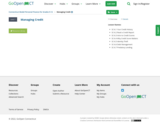
Lesson Names:Career Exploration Finding a JobResumes and Cover Letters The Interview Starting a New Job

Lesson Names:Your Money & Social Media Advertisements & Dark Patterns Comparison Shopping Identity Theft Scams & Fraud
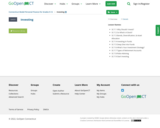
Lesson Names:Intro to InsuranceAuto Insurance Renters & Homeowners Insurance How Health Insurance Works How to Access Health Insurance Other Types of Insurance
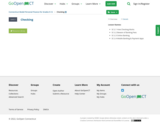
Lesson Names:Why Should I Invest? What is the Stock Market? What is a Stock? What is a Bond? Managing Risk Investing in Funds Deep Dive Into FundsStart Investing The Importance of Investing for Retirement How to Invest for Retirement Modern Investing
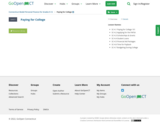
Lesson Names:Debt Management Your Credit Report Your Credit Score Building Credit from Scratch
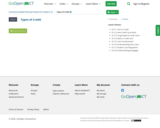
Lesson Names:Paying for College 101 Applying for the FAFSA Scholarships and Grants Student Loans Financial Aid Packages Student Loan Repayment Time for Payback
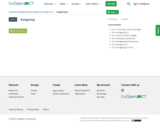
Lesson Names:Taxes and Your Pay StubThe Tax Cycle and Job Paperwork Teens and Taxes How to File Your Taxes Completing the 1040
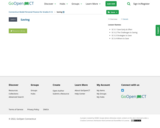
Lesson Names:Intro to Credit Young People & Credit Cards Using Credit Cards Wisely Loan Fundamentals Auto LoansMortgagesPredatory Lending

CSDE Model Curricula Quick Start GuideEquitable and Inclusive Curriculum The CSDE believes in providing a set of conditions where learners are repositioned at the center of curricula planning and design. Curricula, from a culturally responsive perspective, require intentional planning for diversity, equity, and inclusion in the development of units and implementation of lessons. It is critical to develop a learning environment that is relevant to and reflective of students’ social, cultural, and linguistic experiences to effectively connect their culturally and community-based knowledge to the class. Begin by connecting what is known about students’ cognitive and interdisciplinary diversity to the learning of the unit. Opposed to starting instructional planning with gaps in students’ knowledge, plan from an asset-based perspective by starting from students’ strengths. In doing so, curricula’s implementation will be grounded in instruction that engages, motivates, and supports the intellectual capacity of all students.Course Description: In Kindergarten, instructional time should focus on two critical areas: (1) representing and comparing whole numbers, initially with sets of objects; (2) describing shapes and space. More learning time in Kindergarten should be devoted to number than to other topics. Upon completion of this course students will have the ability to: Know number names and the count sequence. Count to tell the number of objects. Compare numbers. Understand addition as putting together and adding to and understand subtraction as taking apart and taking from. Work with numbers 11-19 to gain foundations for place value. Describe and compare measurable attributes. Classify objects and count the number of objects in each category.Identify and describe shapes. Analyze, compare, create, and compose shapes. Aligned Core Resources:Core resources is a local control decision. Ensuring alignment of resources to the standards is critical for success. There are tools that are available to assist in evaluating alignment, such as CCSSO’s Mathematics Curriculum Analysis Project and Student Achievement Partner’s Instructional Materials Evaluation Tool. In addition EdReports and Louisiana Believes are two sources of completed reviews for a variety of resources. Connecticut is currently working on providing additional alignment guidance for the most frequently used resources across the state. Aligned Core Programs: The CSDE in partnership with SERC has engaged with providers of high-quality vetted resources to provide additional alignment guidance to the CSDE model curriculum. High-quality instructional resources are critical for improving student outcomes. The alignment guidance is intended to clarify content and support understanding for clear implementation and coherence. Materials selection is a local control decision and these documents have been provided from participating publishers to assist districts in implementation. Use of the materials from these publishers is not required. These aligned core programs meet expectations as reported by EdReports. If your resource is not listed below, you are encouraged to review EdReports to ensure the alignment of your resource to the Connecticut Core Standards. Strong alignment of curricula and instructional materials have the potential to support student engagement of meaningful grade level content daily and teacher growth. enVisions Grade KEureka Grade KImagine Learning Illustrative Mathematics Grade Ki-Ready Classroom Mathematics Grade KHMH Into Math Grade KFinancial Literacy Connections:The State of Connecticut is committed to implementing high-quality Financial Literacy instruction at all grade levels beginning in kindergarten. Financial Literacy supports students’ academic performance in several subject areas. The K-5 Model Math Curricula embeds tasks that align the mathematical content and skill to the essential Financial Literacy concepts such as income, spending, saving, investing, credit and risk. The concepts contained in the learning tasks are designed to be rich, hands-on activities with developmentally appropriate real-world connections. The tasks are identified by grade level and embedded in the appropriate units so that students can demonstrate mastery of what they need to know and be able to do by the end of their K-5 school experience. In this way, elementary students will be prepared to build upon Financial Literacy knowledge as they advance through middle and high school.Additional Course Information: Major work of Kindergarten mathematics focuses on addition and subtraction – concepts, skills, and problem solving; place value. Fluencies expected for Kindergarten include: Add/subtract within 5 Habits of Mind/SEIH/Transferable Skills Addressed in the Course: The Standards for Mathematical Practice describe the thinking processes, habits of mind, and dispositions that students need to develop a deep, flexible, and enduring understanding of mathematics. They describe student behaviors, ensure an understanding of math, and focus on developing reasoning and building mathematical communication. Therefore, the following should be addressed throughout the course: Make sense of problems & persevere in solving them Reason abstractly & quantitatively Construct viable arguments & critique the reasoning of others Model with mathematics Use appropriate tools strategically Attend to precision Look for & make use of structure Look for & express regularity in repeated reasoning

Unit Overview/Summary - FOCUS: This unit focuses on counting and cardinality as well as operations and algebraic thinking. Learning in this unit will enable students to: Know number names and the count sequence. Count to tell the number of objects. Compare numbers. Understand addition as putting together and adding to, and understand subtraction as taking apart and taking from
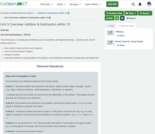
Unit Overview/Summary - FOCUS: This unit focuses on counting and cardinality as well as operations and algebraic thinking. Learning in this unit will enable students to: Know number names and the count sequence. Count to tell the number of objects. Compare numbers. Understand addition as putting together and adding to, and understand subtraction as taking apart and taking from

Unit Overview/Summary - FOCUS: This unit focuses on geometry and measurement and data. Learning in this unit will enable students to: Analyze, compare, create, and compose shapes. Describe and compare measurable attributes
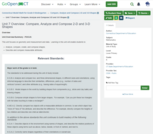
Unit Overview/Summary - FOCUS: This unit focuses on geometry and measurement and data. Learning in this unit will enable students to: Analyze, compare, create, and compose shapes. Describe and compare measurable attributes

Unit Overview/Summary - FOCUS: This unit focuses on counting and cardinality. This is supported with measurement and data within the unit. Learning in this unit will enable students to: Know number names and the count sequence. Count to tell the number of objects. Compare numbers.
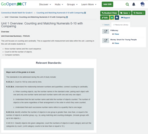
Unit Overview/Summary - FOCUS: This unit focuses on counting and cardinality. This is supported with measurement and data within the unit. Learning in this unit will enable students to: Know number names and the count sequence. Count to tell the number of objects. Compare numbers.